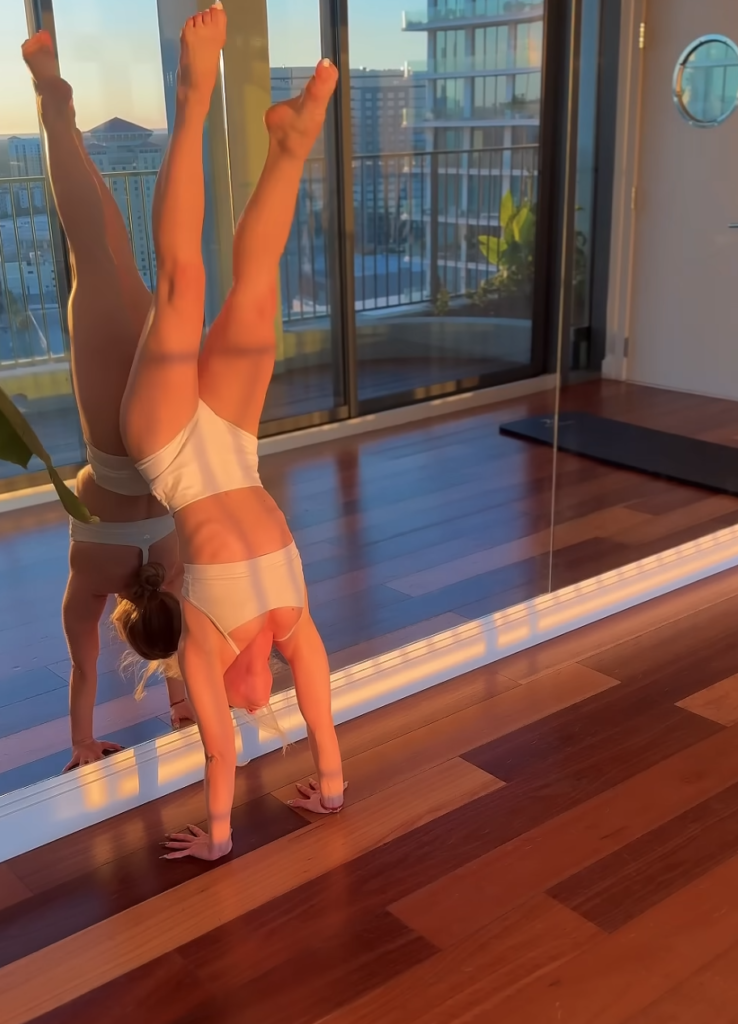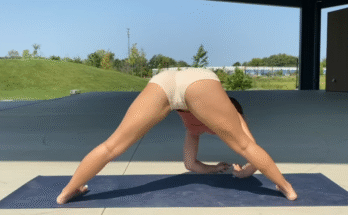lexibility, stretching, yoga, handstand, workout, fitness, yoga girl, flexible, stretching exercises, split, yoga practice, strength, dancer, yoga challenge, yoga tricks, flexible girl, flexibility exercises, cheeky, yoga pants, contortion, gym, gym girl, gym motivation, hot yoga, flexibility stretching, yoga pose, over split, straddle split, Yoga For Flexibility, Deep Arch Yoga, Yoga Splits Training, Flexibility Exercises, workout, bodybuilding, weight lifting, sports, muscle, Leggings, gym shorts

Mastering the handstand is a journey that requires a blend of strength, flexibility, balance, and consistency. Whether you are a beginner just learning to kick up against a wall or an advanced practitioner refining your freestanding balance, your training frequency plays a crucial role in your progress. Understanding how often to train, what exercises to include, and how to prevent injury can help you develop a sustainable and effective handstand practice.

The Fundamentals of Handstand Training
A handstand is a full-body exercise that primarily engages the shoulders, arms, core, and wrists. While strength is a key component, balance and proprioception—the awareness of body positioning—are equally important. Consistent training, coupled with proper recovery, allows your muscles and nervous system to adapt, improving control and endurance in the inverted position.
To structure an effective handstand training regimen, consider these key factors:
- Your Current Skill Level: Beginners may require more frequent practice to develop the necessary strength and technique, while advanced practitioners might focus on refining control and endurance.
- Recovery and Overuse Prevention: Since handstands place significant stress on the wrists, shoulders, and core, training frequency should be balanced with adequate rest and mobility work.
- Training Goals: Are you aiming for a 10-second freestanding handstand, handstand push-ups, or transitions into other movements like presses or one-arm balances? Your goal will influence your training volume.

How Often Should You Train Handstands?
Beginner (0-10 seconds hold)
- Training Frequency: 4-6 days per week
- Session Length: 10-30 minutes per session
- Focus Areas: Wrist strength, shoulder stability, wall-supported holds, and basic kick-ups
Beginners benefit from frequent exposure to handstands to develop body awareness and overcome the fear of being upside down. Short, consistent sessions focusing on alignment drills and core engagement are more effective than long, exhausting workouts.

Intermediate (10-30 seconds hold)
- Training Frequency: 3-5 days per week
- Session Length: 30-45 minutes per session
- Focus Areas: Freestanding balance, controlled entries, endurance, and flexibility
At this stage, the goal is to build endurance and refine balance. Practicing against a wall for longer holds and transitioning to free-standing attempts helps bridge the gap between strength and control.
Advanced (30+ seconds hold, variations, presses, one-arm handstand)
- Training Frequency: 3-5 days per week
- Session Length: 45-60 minutes per session
- Focus Areas: Freestanding balance, endurance training, press work, and dynamic movements
Advanced practitioners should focus on refining control, incorporating drills like handstand walking, press-to-handstand variations, and one-arm balance work. Strength and flexibility training become crucial in mastering complex movements.

Structuring a Handstand Training Session
A well-rounded handstand session should include:
- Warm-Up (10-15 minutes)
- Wrist mobility exercises (wrist rolls, flexor and extensor stretches)
- Shoulder activation (banded exercises, wall slides, or scapular push-ups)
- Core activation (hollow body holds, planks, or hanging leg raises)
- Handstand Drills (20-40 minutes)
- Wall-supported holds (belly-to-wall or back-to-wall)
- Freestanding attempts and balance drills
- Kick-ups and controlled descents
- Handstand push-ups or press drills (for strength development)
- Cool-Down & Flexibility Work (10-15 minutes)
- Shoulder and wrist stretching (child’s pose, puppy stretch, shoulder openers)
- Hip and hamstring flexibility (pike folds, pancake stretch, straddle work)
- Breathing exercises to promote recovery

Strength and Flexibility for Handstands
To support your handstand journey, incorporate strength and flexibility exercises outside of your handstand training.
Strength Exercises:
- Pike push-ups: Strengthens the shoulders and triceps
- Handstand wall walks: Develops endurance and body alignment
- L-sit holds: Builds core stability
- Pull-ups and dips: Strengthens the upper body for stability
Flexibility Exercises:
- Shoulder mobility drills: Improves overhead position and alignment
- Pike and pancake stretches: Enhances hamstring and hip flexibility
- Bridge work: Strengthens the back and improves spinal mobility

Avoiding Overtraining and Injury
Overtraining can lead to wrist pain, shoulder impingement, and fatigue, which can hinder progress. Here’s how to avoid common pitfalls:
- Listen to Your Body: If you experience pain (not just fatigue), take a rest day or focus on mobility work.
- Incorporate Rest Days: Even with high-frequency training, at least one or two days of rest per week are essential for recovery.
- Use Proper Progressions: Avoid rushing into advanced movements before mastering foundational drills.
- Prioritize Mobility: Tight shoulders or hamstrings can limit your ability to align properly in a handstand.

Tracking Progress and Staying Consistent
Consistency is key to mastering handstands. Keep a training journal or record videos to track improvements in alignment, balance, and endurance. Celebrate small milestones, whether it’s holding a 5-second freestanding handstand or achieving your first press-to-handstand.
Remember that progress is not always linear. Some days you’ll feel strong, while others may be more challenging. The key is to stay patient, adjust your training as needed, and continue showing up.
Conclusion
Handstand training is a rewarding journey that requires a balance of strength, flexibility, and consistency. Whether you train daily or a few times a week, the key is to listen to your body, build a solid foundation, and progress gradually. By incorporating structured practice, proper recovery, and mobility work, you can improve your handstand skills and unlock new levels of body control and awareness.
So, how often are you training? Stay dedicated, trust the process, and enjoy the journey to mastering your handstand!



